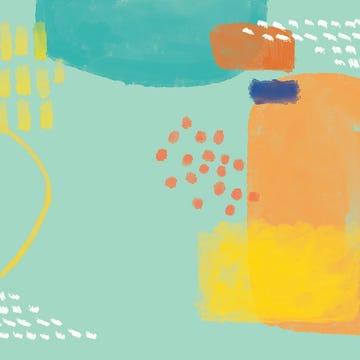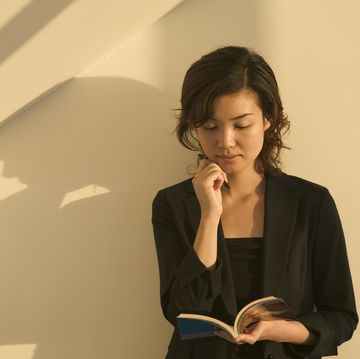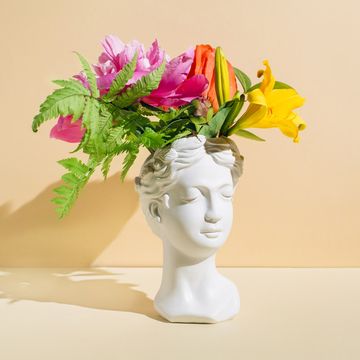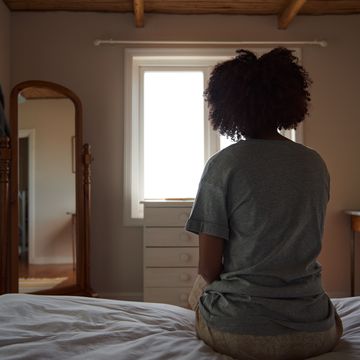Winter can be a tough season for even the most cheery people to get through. It gets dark early, it’s freezing out, and there’s a general lack in willpower to be out and about, given how blah it can all feel.
While it’s totally normal to not exactly love winter, if you feel like you tend to struggle emotionally and physically this time of year, you may start to wonder if you’re dealing with the mental health condition, seasonal affective disorder (SAD). SAD can lead to symptoms like feeling depressed most of the day, feeling worthless, having low energy, and losing interest in things you once enjoyed, per the National Institute of Mental Health (NIMH).
But, while this can be a difficult illness to suffer from, there are seasonal affective disorder treatments that can help. Here’s what you need to know about SAD and how to treat it.
What is seasonal affective disorder?
SAD is a type of depression that has a recurrent seasonal pattern, NIMH says. Symptoms usually last about four to five months per year. While it’s possible to develop SAD in the summer months, NIMH says it’s usually linked to the winter season.
Scientists don’t totally understand what causes SAD, but there are some theories. During the winter, people with SAD may have lower levels of the feel-good hormone serotonin in their nerve cells, NIMH says. They may also overproduce the hormone melatonin, which is important for sleep-wake cycle, in the winter, leading to lethargic feelings.
SAD has also been linked to a lack of vitamin D, a vitamin that promotes serotonin production. Research has also linked a lack of vitamin D to symptoms of more general forms of depression.
Finally, a lack of vitamin D may also be to blame, which research has linked to symptoms of depression.
Why is it important to seek treatment if you have SAD?
“SAD is more than just ‘winter blues,’” says Hanne Hoffman, Ph.D., assistant professor at Michigan State University and principal investigator in the Hoffman Lab, which studies how light impacts well-being, mood, and changes in brain function. Symptoms of the condition “can be distressing and overwhelming and can interfere with daily functioning,” she says.
Mood disorder expert Andrew Leuchter, M.D., a professor of psychiatry and director of the Neuromodulation Division at the Semel Institute for Neuroscience and Human Behavior at UCLA, stresses that it’s “really important” to think about SAD “in the same way we think about depression and other kinds of illnesses.”
“Just like any other form of depression, we would want to treat it,” he adds.
When to seek help for seasonal affective disorder
If you feel that you need help for SAD (or any other health condition), you absolutely should consult a professional. But, if you’re not sure, Hoffman says experiencing several of the following symptoms can be signs that it’s time to see a professional:
- You have a lack of energy
- You’re not as motivated as you usually are
- You have trouble concentrating
- You feel “down”
- You feel grumpy, moody, or anxious
- Your eating patterns have changed
- Your weight has changed
- Your sleep quality is worse and you might sleep more, but you still feel tired when you get up
- You feel worthless
- You feel guilty
- You’ve had thoughts of suicide
Seasonality is important with SAD, Hoffman points out. “For winter SAD, these symptoms will happen in the fall and winter and will come back year after year, if left untreated,” she says. “It is important to consult with your PCP if you have these signs to receive the best treatment strategy.”
How is seasonal affective disorder treated?
Treatment for SAD can generally be broken down into several main categories and doctors may recommend that you do one or several to help control your symptoms, Dr. Leuchter says.
Light therapy
Light therapy, which involves sitting in front of a very bright light box for 30 to 45 minutes a day, has been a mainstay of SAD treatment since the 1980s, NIMH says. The goal of this treatment is to expose people to a bright light (i.e. one that’s 10,000 lux) to help make up for the lack of natural sunshine in the winter.
Light boxes are about 20 times brighter than regular indoor light. “Light therapy is most efficient when used first thing in the morning, and no later than around 1 p.m.,” Hoffman says. Most people see an improvement in their symptoms anywhere from one to two weeks after starting treatment, she says, but continuing with treatment is important.
“It remains unclear exactly how light therapy works,” Hoffman says. “It is thought that light therapy activates neuronal circuits regulating your wellbeing. In other words, brain circuits can be thought of as ‘brain highways,’ where reducing traffic on the highway causes a reduction in feel good signals such as serotonin, leading to less traffic to the ‘feel good’ centers in the brain, which might cause depression.”
Psychotherapy
Also known as “talk therapy,” twice weekly psychotherapy sessions “have been shown to be effective at reducing the symptoms of SAD,” Hoffman says. Psychotherapy also “works well in combination with light therapy,” Hoffman adds.
Cognitive behavioral therapy (CBT), a type of therapy that’s designed to help people learn to cope with tough situations, has been specifically adapted for SAD patients in something known as CBT-SAD, NIMH says. It’s usually done in two weekly group sessions for six weeks and works to replace negative thoughts related to the winter season. CBT-SAD also uses something called behavioral activation, which helps people find and schedule happy indoor and outdoor activities to help boost their mood.
“Some of the most effective treatments are physical, like light boxes, along with psychotherapy,” Dr. Leuchter says.
Antidepressant medications
Antidepressants like selective serotonin reuptake inhibitors (SSRIs) can be used to treat SAD, Dr. Leuchter says. Some of the most common SSRIs include fluoxetine, citalopram, sertraline, paroxetine, and escitalopram, the NIMH says. The Food and Drug Administration (FDA) has also approved an antidepressant called bupropion that can help prevent major SAD episodes from happening when they’re taken every day from the fall through spring.
“Antidepressants can be helpful as they can for depression in general,” Dr. Leuchter says. “There are some patients that are going to need light therapy and medication.”
Vitamin D
Supplementing with vitamin D may help in patients that are deficient in the vitamin, NIMH says. But research is mixed on how effective the supplement is—some people seem to have results that are effective as light therapy, while vitamin D has not impact on others.
Lifestyle tweaks
The Mayo Clinic recommends making lifestyle tweaks to treat SAD, along with more traditional therapies. Those can include:
- Making your environment sunnier and brighter by doing things like opening your blinds and sitting closer to bright windows during the day
- Getting outside as much as possible
- Exercising regularly
- Normalizing sleep patterns by scheduling reliable wake and bed times
“Many individuals prefer a more holistic approach to treatment,” Dr. Leuchter says.
Again, if you suspect that you have SAD, talk to your healthcare provider about what you’re going through. They should be able to make some recommendations about next steps.













